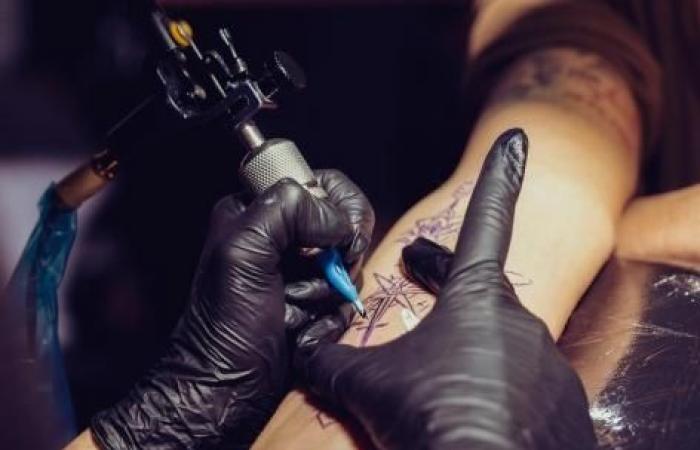THE ESSENTIAL
- The majority of green and blue tattoo inks in Europe contain ingredients not listed on the label, and some even contain substances banned by EU regulations.
- Another problem lies in the technical difficulty in identifying certain banned substances, such as Pigment Blue 15, which makes its ban difficult to enforce.
- “Customers and artists have the right to know what’s in the inks they use.” Indeed, if we do not know the exact composition of the inks, it is difficult to assess the possible risks, whether allergies or long-term health problems.
Tattooing is fashionable, particularly in France where the number of tattooed people increased from 10 to 18% between 2010 and 2018. A new study, published in the journal The Analysthowever, raises questions about the safety of certain inks used. Most green and blue inks distributed in Europe contain substances not mentioned on the label, and some even prohibited by European legislation.
Substandard tattoo inks
Tattoo inks in Europe are governed by the REACH regulation, implemented in 2022, which regulates the use of around 4,000 substances in tattoo products. Certain pigments such as Pigment Blue 15:3 and Pigment Green 8 have been banned. However, the study led by chemist John Swierk found that out of ten inks analyzed from five European manufacturers, nine did not meet these standards.
Researchers at Binghamton University in the United States used Raman spectroscopy, a method frequently used in art to identify pigments, to analyze the composition of the inks. They noticed two problems. First, some inks do not list all the ingredients, which already constitutes a lack of transparency. And four of the ten inks analyzed contained components prohibited by REACH regulations, which raises the question of manufacturers’ compliance, but also of the application of European regulations.
The second problem lies in the technical difficulty in identifying certain banned substances, such as Pigment Blue 15. There are several chemical structures of this pigment, but only one of them is prohibited by REACH. However, researchers have shown that current instruments cannot reliably distinguish which structure is present in an ink. Which makes the ban on this pigment difficult to enforce…
Improving tattoo ink manufacturing standards
“Our study cannot say whether tattoos are safe, but we think it is an important first step in answering the question: ‘Are tattoos safe?’ explains John Swierk in a press release. We’re not against tattoos, but we believe customers and artists have the right to know what’s in the inks they use.” Indeed, if we do not know the exact composition of the inks, it is difficult to assess the possible risks, whether allergies or long-term health problems.
“Our work cannot determine whether ink label issues are intentional or not, but at a minimum it shows that it is crucial for manufacturers to adopt better production standards.”






